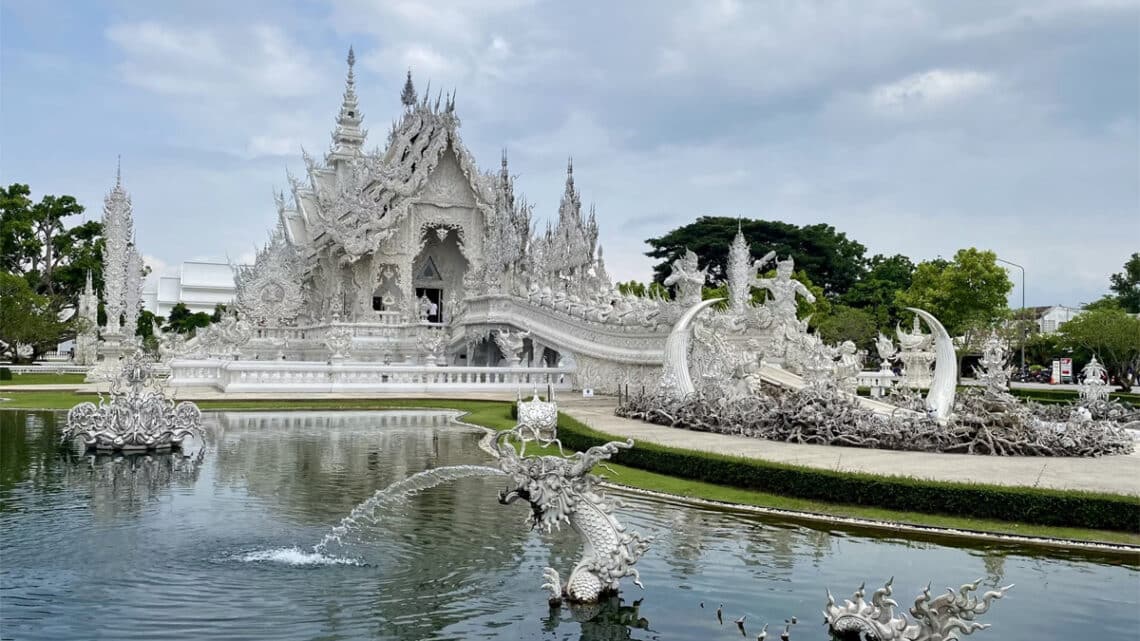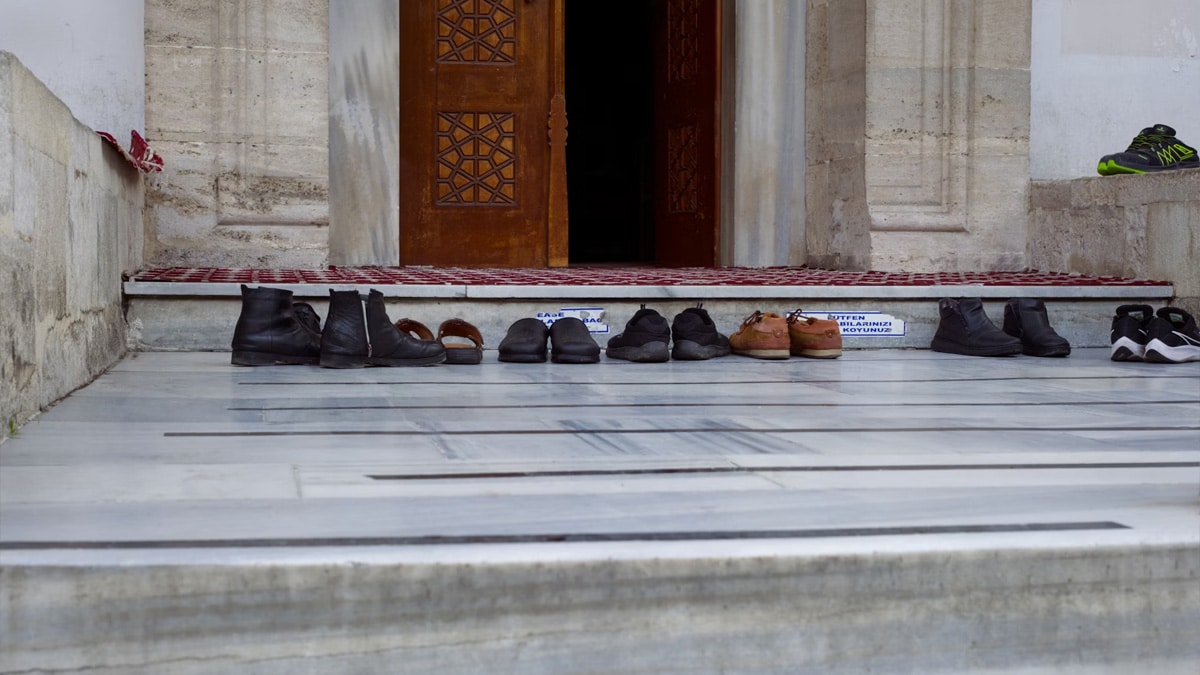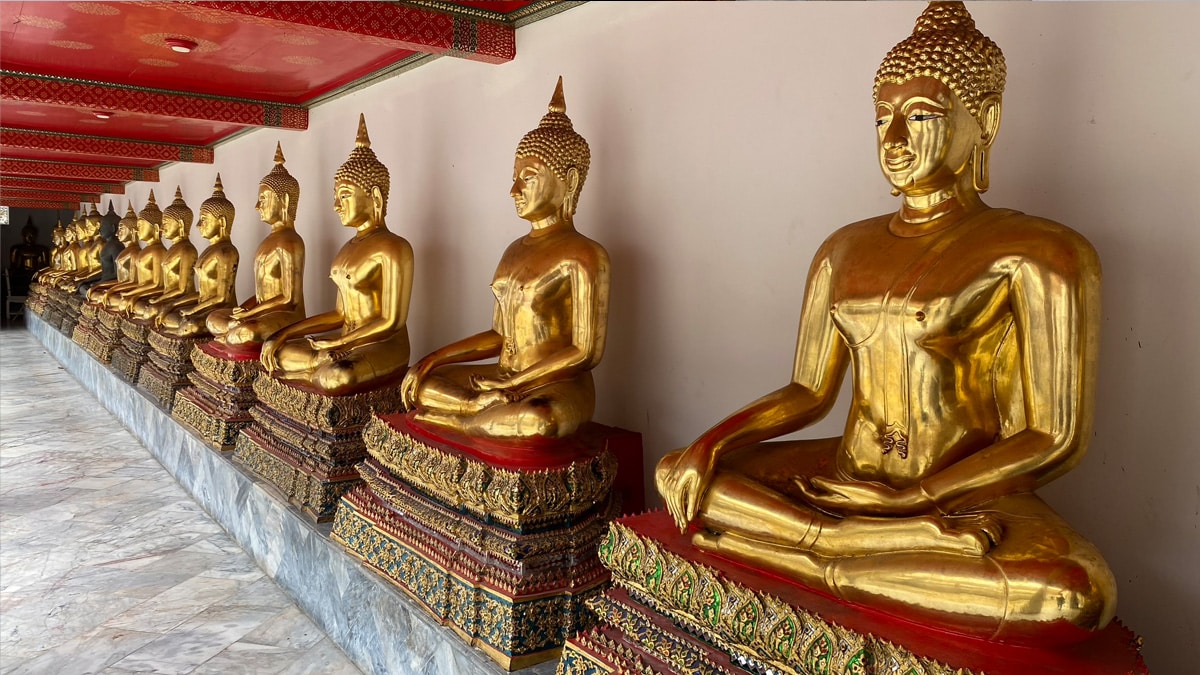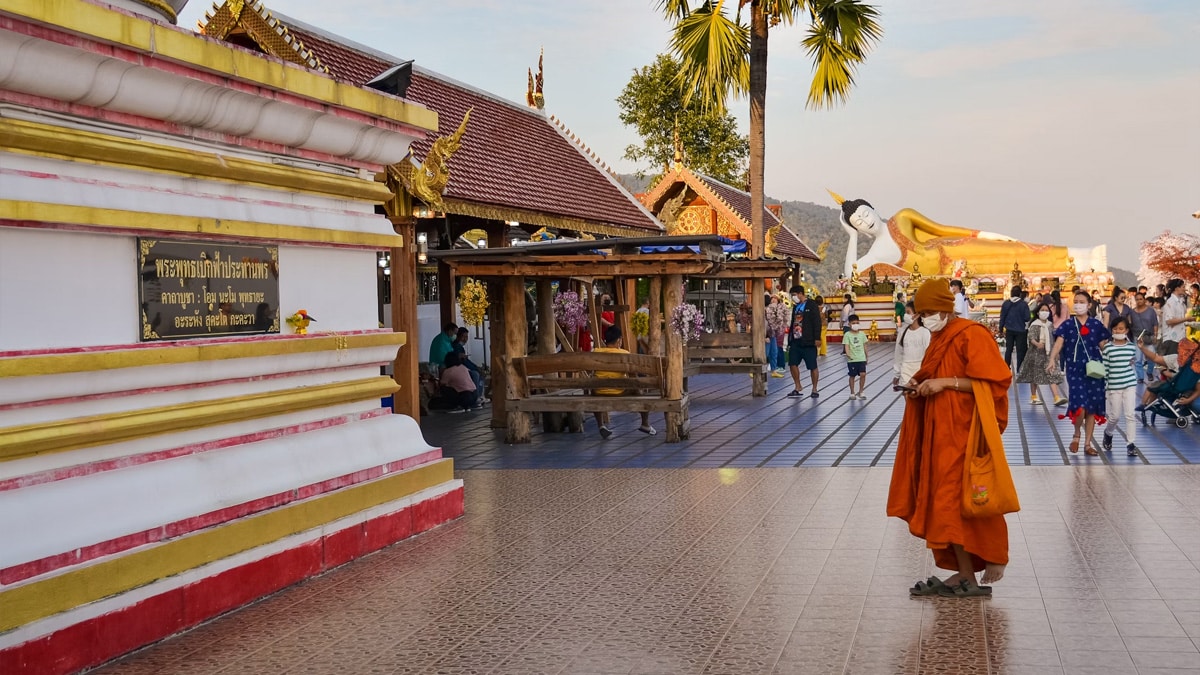
Respectful temple visits in Thailand: all the rules and background information in detail
There are more than 41,000 Buddhist temples, known as “wats”, in Thailand. They are not only magnificent buildings, but above all spiritual centres, places of prayer and meditation. Visitors are generally welcome — provided they behave respectfully and observe cultural customs.
Here you will find a detailed overview of all the important rules, their meaning and helpful tips for your visit to the temple.
1. The dress code: respect through appropriate clothing
The right outfit is the first sign of respect. Conservative, discreet clothing is expected in a temple:
- Men: Long trousers (no shorts), no sleeveless shirts or muscle shirts. A plain T-shirt or shirt is ideal.
- Women: Dresses or skirts that reach at least to the knee, or wide trousers. Tops must cover the shoulders, neckline and back. Strapless tops, loose-fitting or see-through clothing or tight leggings are considered inappropriate.
- Shoes: Flip-flops are often frowned upon. It’s best to wear sandals or shoes with straps at the back.
If you are inappropriately dressed, many large temples offer sarongs or light throws for a small fee.
Note: In front of Wat Phra Kaew in Bangkok, you will find numerous street vendors who will approach you directly about your clothes. They will, of course, try to sell you “matching” clothes in the form of “elephant trousers” or other items of clothing. The dress code at Wat Phra Kaew is very strict. So, my tip: if you prefer to wear shorts due to the heat in the city, take suitable clothes with you and change just before entering the temple. When you leave the temple grounds, you can change again and continue exploring the city in shorts.
Background: The dress code protects the monks and worshippers from distraction and preserves the dignity of the holy place.
2. Take off your shoes: pure steps into the shrine

Shoes must be removed before entering the actual temple building. You will often find shelves or numbered storage areas. If you are uncomfortable walking barefoot, you can, of course, wear socks. But make sure they are clean.
Tip: In large temple complexes, it is advisable to wear shoes that are easy to put on and take off, as you may have to change them several times.
Cultural background: In Buddhist belief, feet are considered unclean — and shoes even more unholy, as they carry the dirt of the outside world.
3. Behaviour in the temple: the art of silence and modesty
- Speak softly or not at all: Even when there is no service, the temple is considered a meditative place.
- Switch off or mute your phone: Telephoning is strictly prohibited inside the temple complex.
- Explain to children beforehand: Children are welcome, but should not organise loud games or races.
Background: Temples are places of retreat for meditation. Noise is considered a disturbance to spiritual practice.
4. Photography: between memory and respect

Photography is permitted in many Thai temples, but with restrictions:
- No photos of worshippers praying without their express permission.
- No selfies or poses with Buddha statues.
- Pay attention to signs: Some areas (e.g. main altars) are not allowed to be photographed.
- Do not take photographs during religious ceremonies.
Tip: Use the moment to capture the atmosphere instead of capturing every scene photographically.
Background: Buddha statues and religious rituals are an expression of deep reverence, not tourist attractions.
Anzeige
5. Direction of movement: walk clockwise around sacred sites
When circling an altar or a Buddha statue, always walk clockwise — i.e. the right side of your body is facing the object.
Background: This practice symbolises respect and the path of light in Buddhism.
6. Donations: a silent gesture of appreciation
There are donation boxes in most temples. Even if a donation is not obligatory, it is appreciated.
- Amount: Even small amounts are appreciated.
- Insert coins or notes carefully and respectfully.
Background: Donations help to finance the maintenance of the facilities and support the monastic community.
7. Dealing with monks: Respect and distance

- Women are not allowed to touch monks or give them objects directly. Instead, the object is placed on the floor or on a cloth. Alternatively, you can give it to a third male person first, who then hands it to the monk.
- Men bow slightly when greeting (“Wai” — put your hands together in front of your chest and bow your head).
Tip: If you are unsure, wait and see how the locals behave.
Background: Monks take vows of abstinence. Physical contact with women could be considered a violation of these vows. The monks must then undergo an elaborate purification procedure.
8. Gestures and body language: small details, big impact
- Never point your finger at people or statues. Instead, point with the flat of your hand.
- Never point the soles of your feet towards holy statues or altars. When praying or resting, sit with your legs folded under or turned to the side.
- Never step on the threshold at the entrance to a temple. This symbolically protects the temple from evil spirits.
- Do not turn your back abruptly on sacred sites. When leaving, you can take a few steps backwards or bow slightly.
Background: Each of these gestures expresses humility and reverence — two core values in Buddhism.
Conclusion
A visit to a temple in Thailand is far more than just a tourist experience. It is an opportunity to honour a spiritual tradition that is thousands of years old. Those who know and respect the rules not only receive a friendly welcome, but also experience the silent, honourable power of these sacred places in a more in-depth way.
Taking time to feel the moment and respect the spiritual atmosphere opens the heart to a deeper cultural experience.



